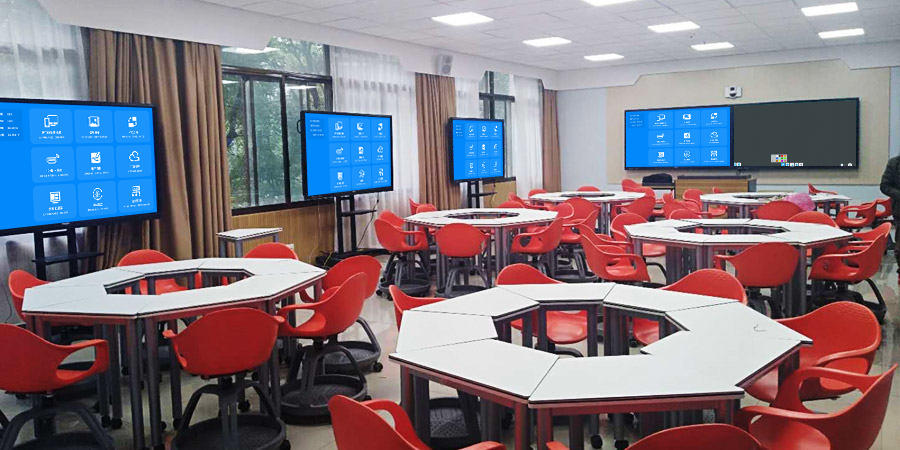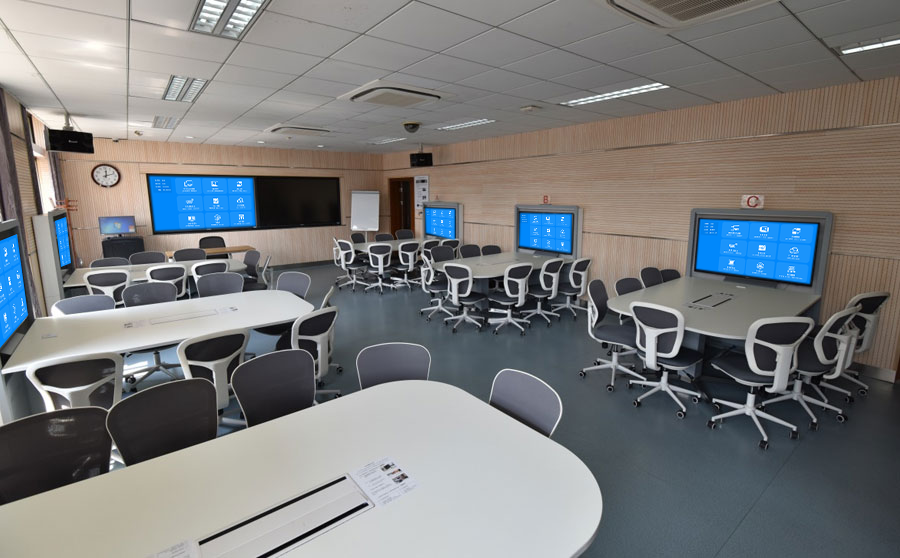Multi-Screen Interaction: Seamless Device Collaboration
Do you want to achieve a seamless connection between your phone, computer, tablet, and a large display? This screen mirroring software is the answer. Compatible with Android, iOS, Windows, and macOS systems, it easily creates a multi-screen interactive environment for free content flow and collaborative operation. Covering office, home, and education scenarios, it makes multi-device collaboration more efficient.
3 Steps to a Multi-Screen Scene, Easy for All Ages
There’s no complex setup. Just follow these steps to quickly start multi-screen interaction:
- Connect Devices to the Same Network: Connect your phone, computer, and tablet, as well as your TV, meeting screen, and projector, to the same Wi-Fi. Open the software on your devices, and they’ll automatically enter the “Interactive Device Pool.”
- Select Core Devices: Click the “Multi-Screen Management” button in the software. Select one device as the “Control Hub” (e.g., a computer for office work, a tablet for teaching), 1-2 devices as “Secondary Devices,” and a large display as the “Display Hub.”
- Start with One Click: Click “Start Multi-Screen Interaction,” and the Control Hub, Secondary Devices, and Display Hub will instantly connect. Content will be synchronized, and operations will be shared. The whole process takes less than 15 seconds.
Core Features, More Flexible Multi-Screen Collaboration
Seamless Content Flow
- Instant File Transfer: You can drag and drop a presentation from your computer (Control Hub) to your tablet (Secondary Device) for annotations. A photo taken with your phone can be instantly pushed to the large screen (Display Hub) and saved to your computer. There’s no need for WeChat or a USB drive, and transfer efficiency is boosted by 70%.
- Content Relay: You can continue a presentation on your computer that you started on your phone. The large display will seamlessly show the content. A video from a tablet can be transferred to a TV, and the progress and volume will be synchronized, ensuring a continuous experience.
Efficient Multi-Device Collaboration
- Unrestricted Two-Way Control: When your computer is the Control Hub and is mirroring to a large display, you can use your phone as a “wireless remote” to flip pages and annotate. When a teacher uses a tablet as the Control Hub, they can use the large display to access supplementary materials from the computer, so their operation isn’t restricted.
- Clear Split-Screen Display: In a meeting, you can mirror a proposal’s outline from your computer to the main screen on the large display and data charts from your tablet to a side screen. The logical connection is more intuitive. For home entertainment, you can mirror a movie to the TV, use a tablet to show comments, and use your phone to control playback, with each screen doing its part.

Versatile for All Scenarios
Office Collaboration: More Efficient and Cost-Effective
- During a project discussion, a designer can use their computer (Control Hub) to mirror a design draft to a large screen. A product manager can then use a tablet (Secondary Device) to annotate feedback in real time, and the feedback will be synchronized to the computer and the large screen. There’s no need to pass devices back and forth.
- For a remote meeting, the local team can use a computer as the Control Hub, and a colleague from another location can use their phone as a Secondary Device. They can use the “real-time annotation” function to work together on the proposal, creating seamless online and offline collaboration.
- For signing a contract, you can mirror it from your computer to a large screen for both parties to review. The client can then use their phone (Secondary Device) to sign it electronically. The signature will be synchronized to the large screen and the computer document, making the whole process paperless and more efficient.
Home Entertainment: Sharing Moments
- For family time, you can mirror an educational animation from a computer to the TV, while a parent uses a tablet (Secondary Device) to open corresponding questions. The child can watch the animation and learn, then submit their answers for grading on the computer, making learning and entertainment fun and easy.
- At a family gathering, friends and family can take turns using their phones as Secondary Devices to push photos and videos to the large screen. The computer can be used to create a digital photo album at the same time, with multi-screen cooperation making sharing more fun.
- For watching a movie or playing a game, the TV can show the screen, the phone can act as a “game controller,” and the tablet can show the chat window. You can play and interact at the same time, making the experience richer.
Education: More Lively Lessons
- A teacher can use a tablet (Control Hub) to mirror a lesson to a large screen. Students can then use their phones (Secondary Devices) to scan a code and join the interaction. They can answer questions and submit homework online, and the results will be synchronized to the large screen in real time. This boosts classroom participation by 50%.
- During group discussions, each group can use a tablet as a Secondary Device to push their work to a group screen. For the summary, a teacher can push the content to the main screen with a single tap for a more organized presentation and precise feedback.
- In a lab class, a teacher can use a phone to record and mirror close-up details of a lab to the large screen, while the computer displays the lab’s instructions. Multi-screen collaboration makes key points easier to understand.
Secure, Stable, and Convenient Management
- Tiered Access Control: An administrator can set “Control Hub permissions” and “Secondary Device permissions.” For example, you can limit Secondary Devices from editing files in an office setting or prevent students from mirroring content at will in a classroom, which prevents interference.
- Stable Transmission: It uses multi-channel optimization technology, so when multiple devices are running at the same time, latency is less than 20ms. File transfers and content displays are smooth and lag-free, with a disconnection rate of less than 0.1%.
- Encrypted Data Transmission: Files and annotations transferred between devices are encrypted, so office secrets and personal privacy are not leaked.
The software is also compatible with older devices, and the installation package is less than 100MB, so it runs smoothly without using up too much memory. Whether it’s for office work, home entertainment, or classroom teaching, this software makes it easy to create a multi-screen interactive environment that lets every device maximize its value and achieve efficient collaboration.